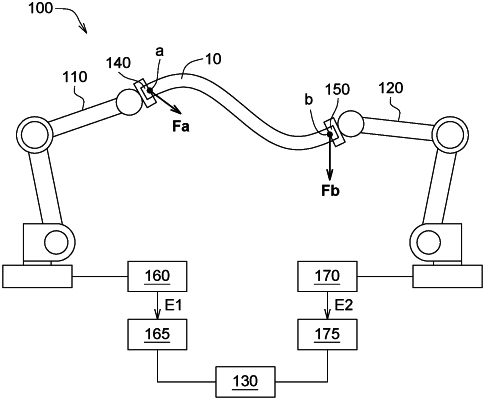| CPC B25J 9/1633 (2013.01) [B25J 9/023 (2013.01); B25J 9/1682 (2013.01); B25J 13/082 (2013.01)] | 11 Claims |

|
1. A robotic arm system, comprising:
a first robotic arm configured to grab an object;
a second robotic arm configured to grab the object; and
a main controller configured to:
determine whether a first force vector of a first force applied by the first robotic arm to the object is equal to a second force vector of a second force applied by the second robotic arm to the object;
when a first magnitude of the first force vector and a second magnitude of the second force vector are not equal, obtain a first difference between the first magnitude and the second magnitude; and
according to the first difference, change at least one of the first force applied by the first robotic arm to the object and the second force applied by the second robotic arm to the object so that the first magnitude and the second magnitude are equal;
wherein the main controller is configured to:
determine whether a first direction of the first force vector and a second direction of the second force vector are in opposite directions respectively, an angle difference between the first direction and the second direction is 180 degrees, and the first direction is not collinear with the second direction;
obtain the first difference between the first magnitude and the second magnitude; and
when the first direction and the second direction are in opposite directions respectively, control the first robotic arm or the second robotic arm so that a second difference between a larger one of the first magnitude and the second magnitude and the first difference is equal to a smaller one of the first magnitude and the second magnitude.
|